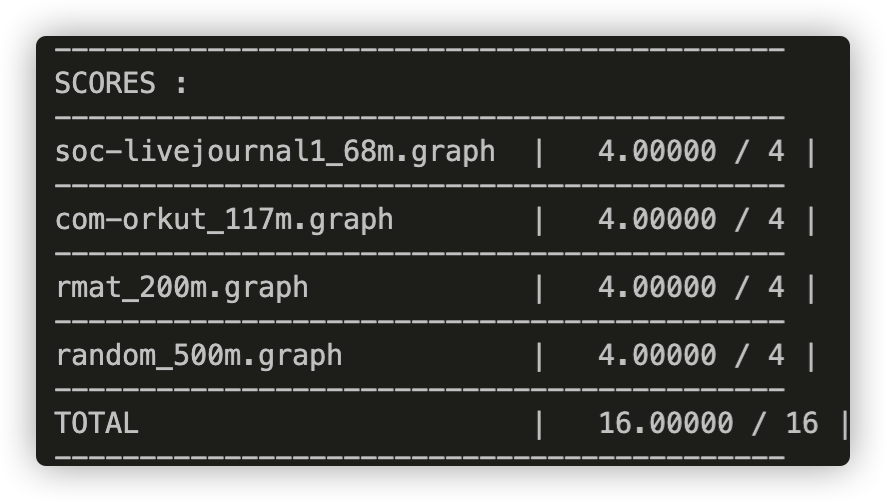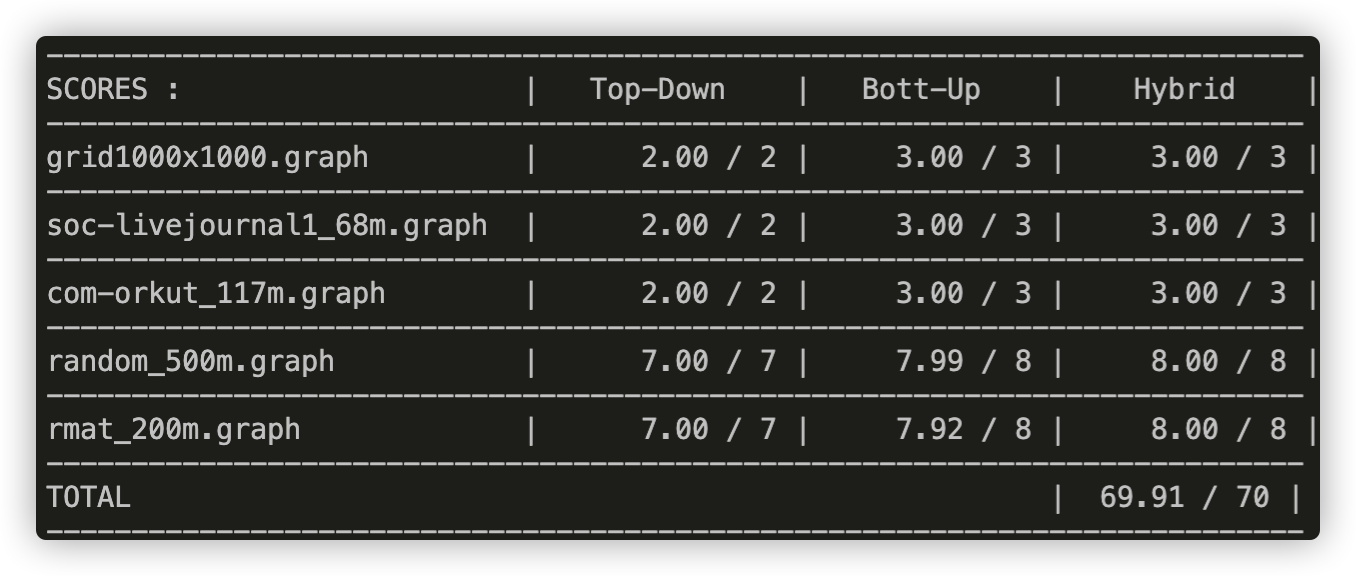The original handout is here.
To learn the basics of openmp, I highly recommend this tutorial.
To understand the omp parallel for better, you should read this short article.
There is also a openmp cheatsheet for you here.
Q1 : In Part 2 (Top Down) and 3 (Bottom Up), where is the synchronization in each of your solutions? Do you do anything to limit the overhead of synchronization?
Answer : In Top Down version, there are two synchronizations:
- First, when one thread wants to check the unvisited nodes, we should synchronize it to avoid two threads visiting the same node simultaneously.
if (distances[outgoing] == NOT_VISITED_MARKER &&
__sync_bool_compare_and_swap(&distances[outgoing], NOT_VISITED_MARKER, distances[node] + 1)) {
local_frontier[local_count++] = outgoing;
}- Second, when add nodes into the frontier.
int start_idx = __sync_fetch_and_add(&new_frontier->count, local_count);
memcpy(new_frontier->vertices + start_idx, local_frontier, local_count * sizeof(int));In Bottom Up version, there is only one synchronization which is the same as the second one of the Top Down version.
Q2 : In Part 4(Hybrid), did you decide to switch between the top-down and bottom-up BFS implementation dynamically? How did you decide which implementation to use?
Answer : Yes. My strategy is quite simple. When the nodes in the frontier are more than the threshold, I choose the bottom up version, and vice versa.
if (frontier->count >= THRESHOLD) {
bottom_up_step(graph, frontier, new_frontier, sol->distances, iteration);
} else {
top_down_step(graph, frontier, new_frontier, sol->distances);
}Q3 : Why do you think your code (and the staff reference) is unable to achieve perfect speedup ?
- Workload imbalance : No matter the bottom up or top down, the work load assigned to each thread depends on the topology of the graph and is highly dynamic.
- Synchronization : Both version needs synchronization to perform correctly.
- Data movement : Each thread needs to move its local frontier into the global frontier which creates overhead.

